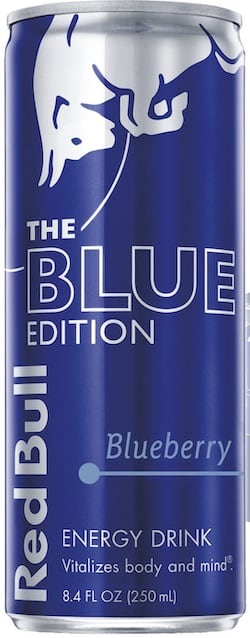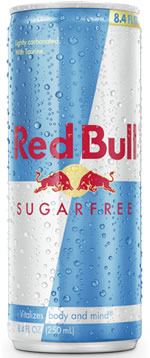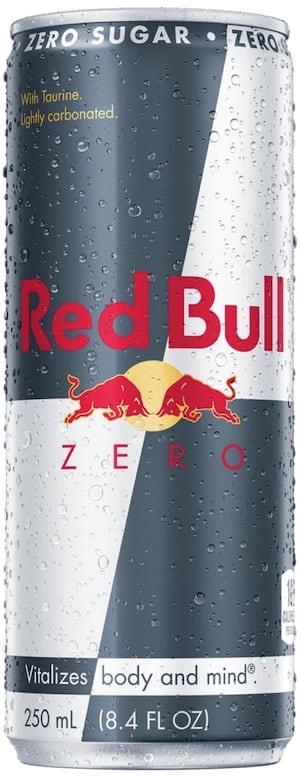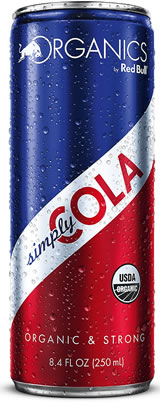Red Bull
Red Bull Energy Drink was created in Austria in 1987, and is consistently the #1 selling energy drink with over 7 billion cans sold each year globally.
It is one of the very first energy drinks and is now distributed in more than 171 countries and employs over 12,000 people worldwide.
The incredibly popular energy drink has been a catalyst for dozens of imitations and has built a very strong brand – although the drink formulation has remained relatively unchanged.
Red Bull Energy Drink Variations
Although several flavor variations of Red Bull have come and gone over the years, their product line remains quite simple.
Click item below for further flavor details.
| Drink | Calories | Caffeine (mg) | mg / fl oz | |
|---|---|---|---|---|
| 117 | 80 | 9.5 | ||
| 113 | 80 | 9.5 | ||
| 10 | 80 | 9.5 | ||
| 0 | 80 | 9.5 | ||
| 0 | 32 | 3.8 | ||
The caffeine per ounce remains the same regardless of the can size.
- 8.46 fl oz (250 ml) can = 80 mg of caffeine
- 12 fl oz (355ml) can = 114 mg of caffeine
Red Bull Energy Drink's secret to success appears to be their early inroads into bars and clubs for use in mixed drinks and its early sponsorship of extreme sports with their famous slogan: Red Bull Gives You Wings…
Science Behind Red Bull
Since Red Bull has been around a long time there are mounting scientific studies testing its effectiveness. Here are a few.
- Alford, C., Cox, H., & Wescott, R. (2001). The effects of red bull energy drink on human performance and mood. Amino acids, 21(2), 139-150. Study link
- Candow, D. G., Kleisinger, A. K., Grenier, S., & Dorsch, K. D. (2009). Effect of sugar-free Red Bull energy drink on high-intensity run time-to-exhaustion in young adults. The Journal of Strength & Conditioning Research, 23(4), 1271-1275. study link
- Astorino, T. A., Matera, A. J., Basinger, J., Evans, M., Schurman, T., & Marquez, R. (2012). Effects of red bull energy drink on repeated sprint performance in women athletes. Amino acids, 42(5), 1803-1808. study link
- Ragsdale, F. R., Gronli, T. D., Batool, N., Haight, N., Mehaffey, A., McMahon, E. C., … & Wilson, T. (2010). Effect of Red Bull energy drink on cardiovascular and renal function. Amino acids, 38(4), 1193-1200. study link







